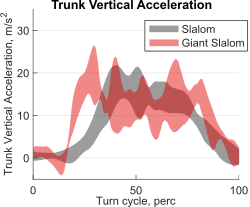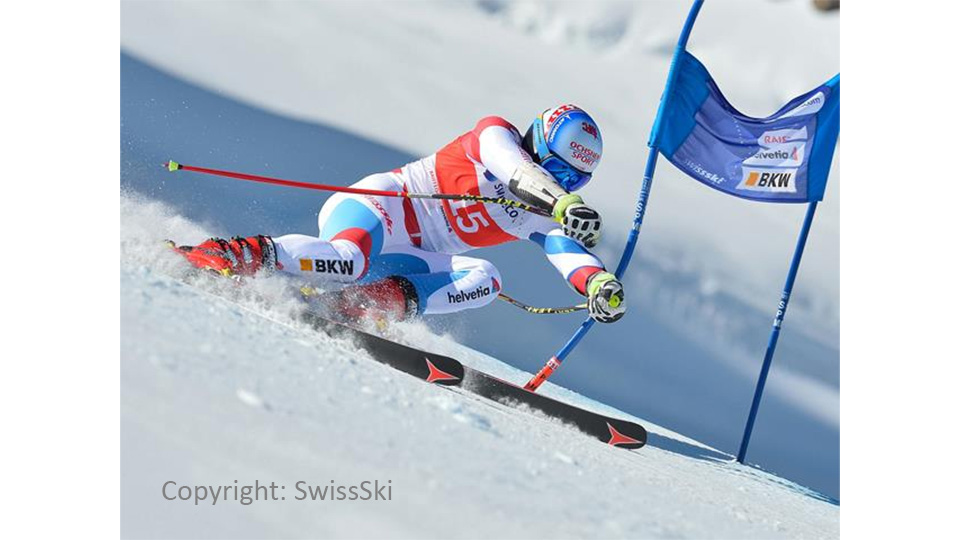Overview
Alpine ski racing is a highly dynamic and fast sport. The ultimate goal is to spend as little time as possible between start and finish while taking each turn smoothly and in a controlled way. The limits are constantly pushed further by the athletes, course setting and equipment, leading to higher skiing speeds and, thus, increasing the risk for injuries. Because of the high skiing speeds measuring the movement of an alpine ski racer is challenging. LMAM is adressing this challenge by devising and validating robust algorithms fusing information from different sources such as inertial sensors and Global Navigation Satellite Systems (GNSS). The algorithms allow reconstructing joint angles, body posture, skiing trajectory and skiing speed over entire races. Moreover, the ease of use of the system favors measuring a large number of athletes and experimental conditions (such as different course settings or snow conditions). Thus, we can better quantify performance factors and injury risk.
The algorithms designed by LMAM are used in two projects. The first project is in close collaboration with SwissSki and targets to better understand the performance aspects of alpine ski racing. We want to better understand how an athlete has to ski a given race to finish first. The second project is in collaboration with the University of Salzburg and aims at injury prevention. We want to better understand how equipment and course setting can lead to a safe skiing.
Performance Analysis project
- Contact person: Kamiar Aminian
- People involved: Benedikt Fasel
- Partners: SwissSki
- Funding source:
In the alpine skiing literature many performance parameters have been suggested and investigated. However, unfortunately, some results are contradictory and up to today there exists no easy to understand concept that can sufficiently explain performance and how to ski a given course faster. The goal of this project is to design and validate an inertial sensor-based measurement system fused with a low-cost GNSS integrated in the athlete’s equipment. With this setup sections of speed loss and gain can be easily detected and different runs can be compared with each other. Measuring a large number of athletes we aim to gain a better insight in performance in alpine ski racing and to propose performance parameters that can also be computed by coaches during regular training sessions.

Injury Prevention project
- Contact person: Kamiar Aminian
- People involved: Benedikt Fasel
- Partners: University of Salzburg
- Funding source:
Injury prevention in alpine ski racing targets both the reduction in acute (e.g. knee injuries) and chronic (e.g. low back pain) injuries. The International Federation of Ski (FIS) is actively working towards a reduction in injury risk and is constantly reassessing its safety regulations. For better understanding the motion constraints in alpine ski racing LMAM is constantly improving its algorithms for estimating the body posture, joint angles, and segment accelerations using body worn inertial sensors. These algorithms are then used by the University of Salzburg who is using the system for measuring the skiing motion of a large number of athletes for different equipment, course settings, or snow conditions. The first goal is to describe the movement. The second goal is to relate movement characteristics to injury patterns. The third goal is to provide feedback to FIS and help them guiding their efforts for improvement of the skiing safety.

